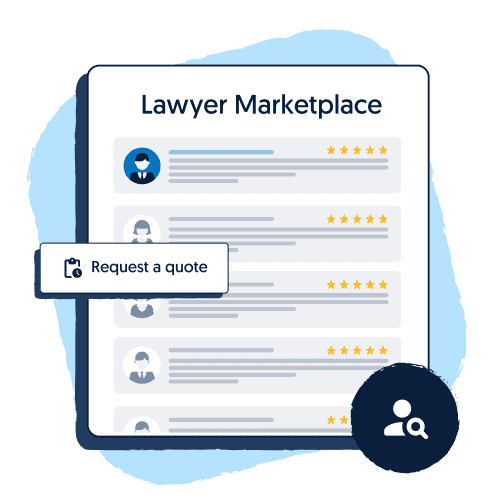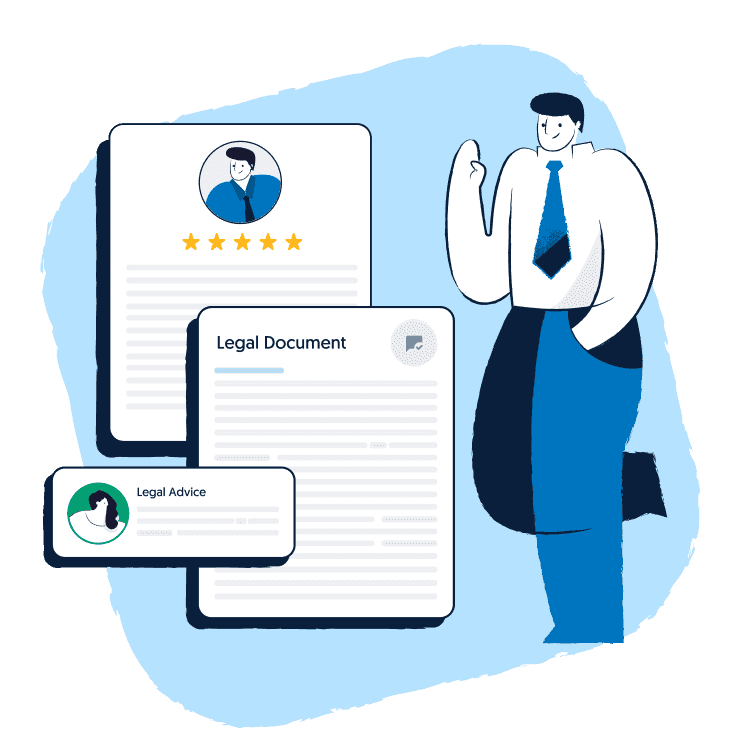So you have identified the document that your business needs and have tracked down an online template. Is your work done?
Far from it. This is where the fun part begins. You may not be going through the hard slog of working with a lawyer, but now you are the main driver of the document completion process and there are many steps to be undertaken.
Never forget that what makes a legal document effective for your business is that it is tailored to its structure and its commercial needs.The more specific the better. In order to achieve this, it is important to be as prepared as possible in terms of information about your business, your plans for it, and any parties that you might establish dealings with.
This article will give you general tips for filling out documents, particularly through Lawpath, and then specific tips for what our most popular documents require by way of prep work.
Table of Contents
General Tips for Drafting Documents
Revise Past Documents You Have Drafted
Chances are, this isn’t your first document. Past documents, particularly those that fulfil similar functions, will bear important clues for how to complete a document. Sometimes it is particularly important- from a legal perspective, there should be consistency between, for instance, a Shareholders’ Agreement and a Constitution, and between workplace policies and employment agreements. Sometimes this will take the form of copying over party details, or getting a sense for the product and service timelines that your company is working with.
Although it is important to understand the needs of each document separately, consulting past documents can streamline the process and ensure consistency.
Consult the Document Description, and Treat the Questionnaire as a Checklist for Things You Might Need
Our document descriptions contain important information about how to complete and use documents. They may highlight:
- How a document must be signed.
- When we recommend that users do not manually edit documents as this may make them invalid.
- The instances when the complexity of the document may require a lawyer to step in.
- How the document relates to other documents on our platform.
- Particular requirements that must be met for the document to be valid in light of regulatory or legislative provisions. This may include, for instance, paying the right tax or stamp duty.
Many document questionnaires follow a general flow of information input (though many documents include only a few of the following):
- Party details.
- Transaction details or specifications.
- Legal terms and compliance.
- Signature.
Questionnaires therefore function as a checklist for what you need.
If You Hit a Brick Wall, That May Mean You Need Legal Advice
You may have found a complete outline of the prep work needed to complete a document. And you may find that there are one or two issues that you don’t understand, or don’t have the means to obtain information for. These roadblocks may be signals that it’s time to consult a professional. The do-it-yourself approach to completing documents was for a long time the exception and not the rule, and though we at Lawpath have broken down legal concepts to make them more accessible, there are some that remain in the realm of expertise for good reason.
Particularly with high-stakes documents relating to large amounts of money or to regulatory compliance, it may be better to err on the side of caution.
Company Documents
Company documents are the bread and butter of company administration. They are generally completed by the secretary or a director and are made in preparation for or as the outcome of company meetings. As records of company structure, decisions and changes, depending on the particular change, they may have to be submitted to ASIC (or ASIC may have to be notified through a form).
For the following documents, you will need extensive knowledge of how the company will be administered, as well as the needs and preferences of the directors and major shareholders. It is highly recommended that you consult a lawyer when completing these documents. They are generally not signed.
The following documents are highly routine. Particularly the notice of general meeting must adhere to certain procedural requirements that are laid out in the document description. Generally there are greater requirements when the meeting is an AGM or when special resolutions are passed.
These documents will generally be accompanied by resolutions for consideration and voting at the meeting. Many resolutions will be accompanied by particular legislative requirements. These documents are generally signed by the secretary or the chairperson (who is generally the secretary).
- Directors’ Meeting Minutes
- General Meeting Minutes (To Pass Ordinary Resolution)
- General Meeting Minutes (To Pass Special Resolution)
- Notice of General Meeting (including Annual General Meeting)
Although not legally required, it is recommended that companies safely store their company documents for at least a few years as a way of keeping track of company governance.
Trusts
Trust documents are high-risk, as they:
- Often involve large amounts of money or assets of great value.
- Must adhere to specific execution requirements in order to be valid.
- Are accompanied by a range of tax and registration obligations.
It is highly recommended that you consult a lawyer or specialised accountant when completing these documents.
In any event, it is recommended that, before preparing a trust deed, you have:
- Discussed with all parties their benefits and obligations.
- Gathered enough information to identify the particular moneys, assets and properties being included in the trust.
- Understood how to create a trust account (where one is needed).
These are the most important trust documents available on the Lawpath platform:
- Discretionary Trust Deed
- Bare Trust Deed
- Variation of Discretionary Trust
- Change of Trustee Deed (Discretionary Trust)
- Minutes of Meeting of Trustee
Employment & HR Documents
Employment documents are generally highly routine and often require little information gathering other than party details. However, it is important to have an understanding of whether one is acting legally when forming or ending certain employment relationships. For instance, miscategorising employees as casual or as contractors can have serious legal consequences, as can unfair dismissal or a failure to offer conversion.
This is not only a matter of having the right details on a document, but of acting in accordance with that document, and of making the right decisions regarding the status of the employee. The document descriptions provide guidance regarding these issues and there is much guidance provided by Fair Work. However, if there is any doubt, we highly recommend speaking to a lawyer.
- Full Time Employment Agreement
- Casual Employment Agreement
- Termination of Employment (General)
- Letter to Amend Employment Agreement
- Letter of Casual Conversion to Part-Time or Full-Time Employment
Employment policies are relatively simple to prepare from a legal perspective, as most details required concern the practical aspects of managing a workplace. However, they should be treated with the same importance as other legal documents, as they are generally legally binding upon employees.
Our templates provide sets of ready-made, general principles and procedures for how to manage certain aspects of your workplace. These should be tailored to suit your company’s commercial priorities and ensure responsible workplace governance, and this will become clear once you start completing each policy document. In some instances, this may require expertise from other specialists, such as cybersecurity experts. There may be some circumstances where workplace policies have important legal implications, such as where a company meets the criteria to be required to have a whistleblower policy.
Workplace policies are often compiled into an employee handbook, to be given to staff as soon as they begin their employment. Lawpath’s employment handbook contains the most important workplace policies on our platform, but there are many more available.
Commercial Documents
Commercial documents can be the most varied and unpredictable, given the diverse nature of transactions and commercial parties out there. They are also generally high stakes, as they are almost always legally binding, with a few exceptions such as a memorandum of understanding. They create rights and obligations between parties that w?
In preparing to sign commercial documents, you should:
- Authorise a company representative to sign on behalf of the business. This will generally be a director or the secretary, but may also be an agent, partnerships manager or sales person. If you are a sole trader, you will be the one signing.
- Understand the benefits and obligations and evaluate them against your business plan.
- Review previous agreements you have made and understand how new obligations will interact with your existing obligations.
- Carry out some level of due diligence on the other party(ies).
- Where there is room for negotiation, prepare a negotiation strategy to make sure you can make the document suit your commercial interests.
The Lawpath platform has the following commercial documents, alongside a broad range of agreements:
- Non-Disclosure Agreement (Mutual)
- Non-Disclosure Agreement (One Way)
- Services Agreement (Pro-Supplier)
- Services Agreement (Pro-Client)
- Business Sale Agreement
- Memorandum of Understanding (MOU)
- Assignment of Intellectual Property
Lawpath’s document library has over 450 documents that can assist your business in a range of areas. Each document also includes a range of guidance for how to complete it. We also have a comprehensive document management system to help you store and share documents safely.







